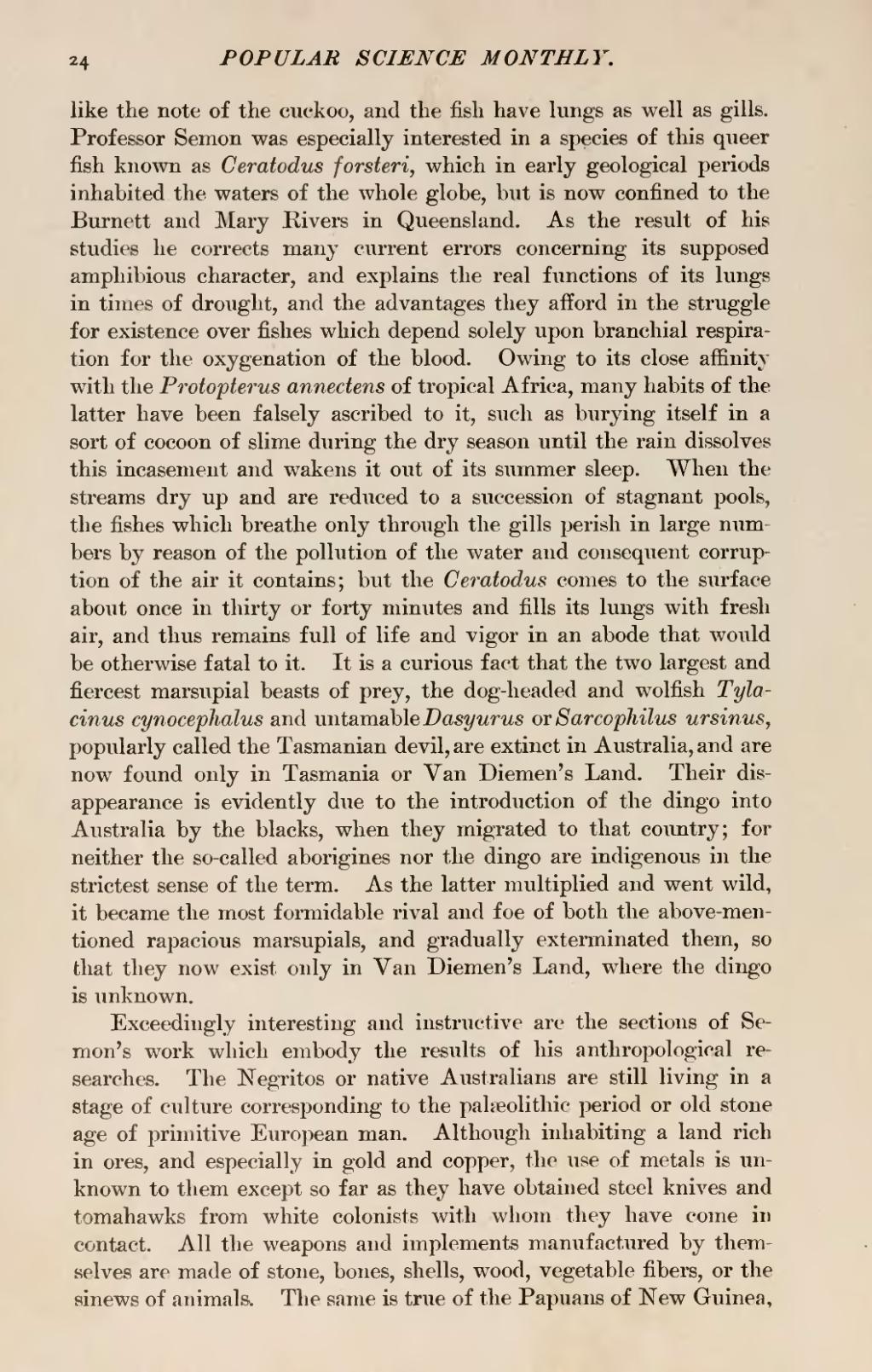like the note of the cuckoo, and the fish have lungs as well as gills. Professor Semon was especially interested in a species of this queer fish known as Ceratodus forsteri, which in early geological periods inhabited the waters of the whole globe, but is now confined to the Burnett and Mary Rivers in Queensland. As the result of his studies he corrects many current errors concerning its supposed amphibious character, and explains the real functions of its lungs in times of drought, and the advantages they afford in the struggle for existence over fishes which depend solely upon branchial respiration for the oxygenation of the blood. Owing to its close affinity with the Protopterus annectens of tropical Africa, many habits of the latter have been falsely ascribed to it, such as burying itself in a sort of cocoon of slime during the dry season until the rain dissolves this incasement and wakens it out of its summer sleep. When the streams dry up and are reduced to a succession of stagnant pools, the fishes which breathe only through the gills perish in large numbers by reason of the pollution of the water and consequent corruption of the air it contains; but the Ceratodus comes to the surface about once in thirty or forty minutes and fills its lungs with fresh air, and thus remains full of life and vigor in an abode that would be otherwise fatal to it. It is a curious fact that the two largest and fiercest marsupial beasts of prey, the dog-headed and wolfish Tylacinus cynocephalus and untamable Dasyurus or Sarcophilus ursinus, popularly called the Tasmanian devil, are extinct in Australia, and are now found only in Tasmania or Van Diemen's Land. Their disappearance is evidently due to the introduction of the dingo into Australia by the blacks, when they migrated to that country; for neither the so-called aborigines nor the dingo are indigenous in the strictest sense of the term. As the latter multiplied and went wild, it became the most formidable rival and foe of both the above-mentioned rapacious marsupials, and gradually exterminated them, so that they now exist only in Van Diemen's Land, where the dingo is unknown.
Exceedingly interesting and instructive are the sections of Semon's work which embody the results of his anthropological researches. The Negritos or native Australians are still living in a stage of culture corresponding to the palæolithic period or old stone age of primitive European man. Although inhabiting a land rich in ores, and especially in gold and copper, the use of metals is unknown to them except so far as they have obtained steel knives and tomahawks from white colonists with whom they have come in contact. All the weapons and implements manufactured by themselves are made of stone, bones, shells, wood, vegetable fibers, or the sinews of animals. The same is true of the Papuans of New Guinea,
